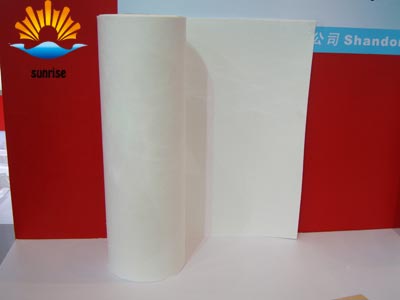Product Search
Quickly find the product you need
Products List
Refractory Knowledge
- Thermal Shock Resistant Fireproof Heat In
- Manufacturing process of fire clay insula
- The Use of Mullite Insulation Bricks
- Pollution and treatment in the production
- Refractory material production process
- Classification of mullite insulation bric
- the development of the refractory brick i
- Pros and cons of lightweight mullite bric
- Production Process Methods of Refractory
- Aggregates Used For the Production of Ins
Products List
- Phone:0086-370-63838939
- Email:sales@sunriserefr.com
- Office Address: No.36 Fengchan Road Of Zhengzhou, Henan, China (Mainland)
6 major properties of refractory fiber
Date:2018-03-06 14:30 | From:Zhengzhou Sunrise Refractory | Author:admin
Refractory fiber is a fibrous light refractory material, which has the characteristics of light weight, high temperature resistance, good thermal shock resistance, low thermal conductivity, small heat capacity and resistance to mechanical vibration. Its main applications in metallurgy, machinery, petroleum, chemical, electronics and other industries.
The main properties of fire-resistant fibers are divided into six categories: heat resistance, thermal stability, thermal conductivity, sound-absorbing properties, chemical stability, elasticity and resistance to air permeability. In this, Koma refractory material on these six major performance to do a deep analysis, for the majority of readers reference.
First, heat resistance.
Refractory fiber, as the third generation refractory material after traditional heavy refractory bricks and unshaped refractories, not only has the excellent thermal insulation property of general low thermal conductivity material, but also has the excellent heat resistance of continuous working under high temperature.
The highest temperature fiber, refractory fiber is the short time can withstand the ultimate temperature, to characterize the refractory fiber heat resistance index. Fire-resistant fibers allow long-term use temperature is generally lower than the maximum temperature of about 200 ℃. For domestic 1260 ℃ type fiber products, for example, the long-term use temperature is about 1000 ℃. Therefore, the concept of maximum service temperature is very important. It is closely related to the long-term service temperature and is the main reference for fiber application.
Second, thermal stability.
The thermal stability of refractory fibers is unmatched by any dense or lightweight refractory material. After several times generally dense brick refractory heat will produce cracks, even spalling, damage. The refractory fiber products are 2 ~ 5μm diameter fibers intertwined with each other to form porous products. Even if the temperature changes rapidly, it will not produce spalling, but also resist bending, twisting and mechanical vibration. Therefore, in theory, it is not subject to any temperature changes.
Third, the thermal conductivity.
Still air is an excellent thermal insulator with low thermal conductivity and low thermal capacity. Refractory fibers have a thermal conductivity close to that of air because refractory fibers have a mixed structure of solid fibers and air and have a porosity of over 90%.
Fourth, sound-absorbing properties.
Since the refractory fiber product is a fine fiber porous assembly, the sound absorption volume reduction rate of a fiber product having a small volume density is high for high-frequency sound waves, and the sound absorption volume reduction rate of fiber products having a small bulk density is low for low-frequency sound waves. Refractory fiber products particularly suitable for high temperature noise at the device, the effect is better.
Fifth, chemical stability.
In oxidative and neutral seven minutes, refractory fiber has good chemical stability. In a reducing atmosphere, the chemical stability of the alkali metal oxides is poor, and the crystallization rate and the grain growth rate of the fibers are directly affected, so that the properties of the refractory fibers are deteriorated.
Six, flexibility and anti-breathable.
Refractory fibers are used as sealing and cushioning materials for high-temperature gases and require elasticity (compression reduction) and resistance to gas permeation.
The compressive resilience of refractory fiber increases with the increase of the density of the fiber product, and its air permeability resistance also increases correspondingly, that is, the permeability of the fiber product decreases. Therefore, as a high temperature gas sealing material and padding material, should use high density fiber products, in order to improve its compression rebound rate and air permeability resistance.



